Works in situ
2021 — …
Romain Grateau
Grand tourisme à injection, 2021 Reinforced concrete bookcase: Portland cement, sand, mineral fillers, steel, oxides and pigments, encaustic, 300 x 215 x 35 cm.
Photo : © DR. An in situ work that will store the collection of books and documents of Bétonsalon, this bookcase by Romain Grateau is a knowing pun on the art centre’s name, a literalized vision of the form that un salon en béton [a concrete living-room] might take. A self-supporting structure, the bookcase extends and appropriates the functional architecture of the space through its modulation of horizontal lines and support modules. Combining tapered and squat columns with slightly skewed modules whose forms are at once rough and delicate, the different processes used to create this unit are clearly visible in the finished piece, offering a multiplicity of possible variations upon a material that is usually synonymous with standardized industrial production. Grateau plays with numerous densities, colourings, finishes and embedded elements, challenging our perception and our ability to separate rubble from art object. By combining careful touches of ornamentation with the heavy-duty techniques of construction, he blends genres and registers from masonry to self-build and from Rocaille to brutalism. The title of the work, drawn from the world of automobiles, refers to a technology that allows vehicles to travel long distances at high speeds. Grateau’s bookcase invokes this mixture of poetry, precision, power and mechanics, whilst subverting a form of masculinity anchored in bodily exertion and physical feats.
Mathilde Belouali
Sylvie Fanchon
BONJOURSINOUSDISCUTIONS, 2021-… Series of 10 sentences in Blanc de Meudon on Bétonsalon’s windows
Commission « oeuvre in situ », Bétonsalon — Centre d’art et de recherche, Paris, 2021-2025.
Photo : Marc Domage, © Galerie Maubert et Adagp, Paris, 2025.
Daubed in whitewash, the four windows at one end of Bétonsalon’s glass façade are transformed into a pictorial surface. One after another, ten enigmatic phrases will be etched out within the whitewash in a standard font, devoid of any punctuation and rendered in tightly packed lettering. Over the course of the exhibition, Bétonsalon’s team will trace out a new phrase as each previous one is worn away. The short affirmations that make up this work by painter Sylvie Fanchon are uttered by Cortana, an intelligent voice assistant developed by Microsoft in the 2010s that is still in use despite already having been made obsolete.
Toeing the line between politeness and pushiness, invitation and imperative, Cortana attempts to make itself useful (IMHERETOHELPDOYOUNEEDANYTHING), to engage users in conversation (HELLOHOWABOUTACHAT) or to improve their productivity (ICANREMINDYOUOFIMPORTANTTHINGSANDMUCHMORE), whilst at the same time warning them not to get too familiar (PLEASEDONTPROVIDEANYPRIVATEINFORMATION). Its limitations nonetheless soon become apparent (IMSORRYIDONTUNDERSTAND). This simple yet already unintelligible language is characteristic of the straightforward and one-dimensional relationships offered by artificial intelligence assistants, which, beneath a helpful and servile veneer, gather information to increase technology companies’ profits and power. Fanchon’s pictorial production is based on pre-existing elements drawn from language and visual culture. Here she uses Cortana, a device at once intrusive, dystopian and comical, as a source of motifs for her paintings and in situ interventions. Facing out over the esplanade in front of Bétonsalon, eliciting questions and curiosity, Cortana’s invitations and their apparent authority are contrasted with the fragility and transparency of the surface on which they are inscribed. Mathilde Belouali
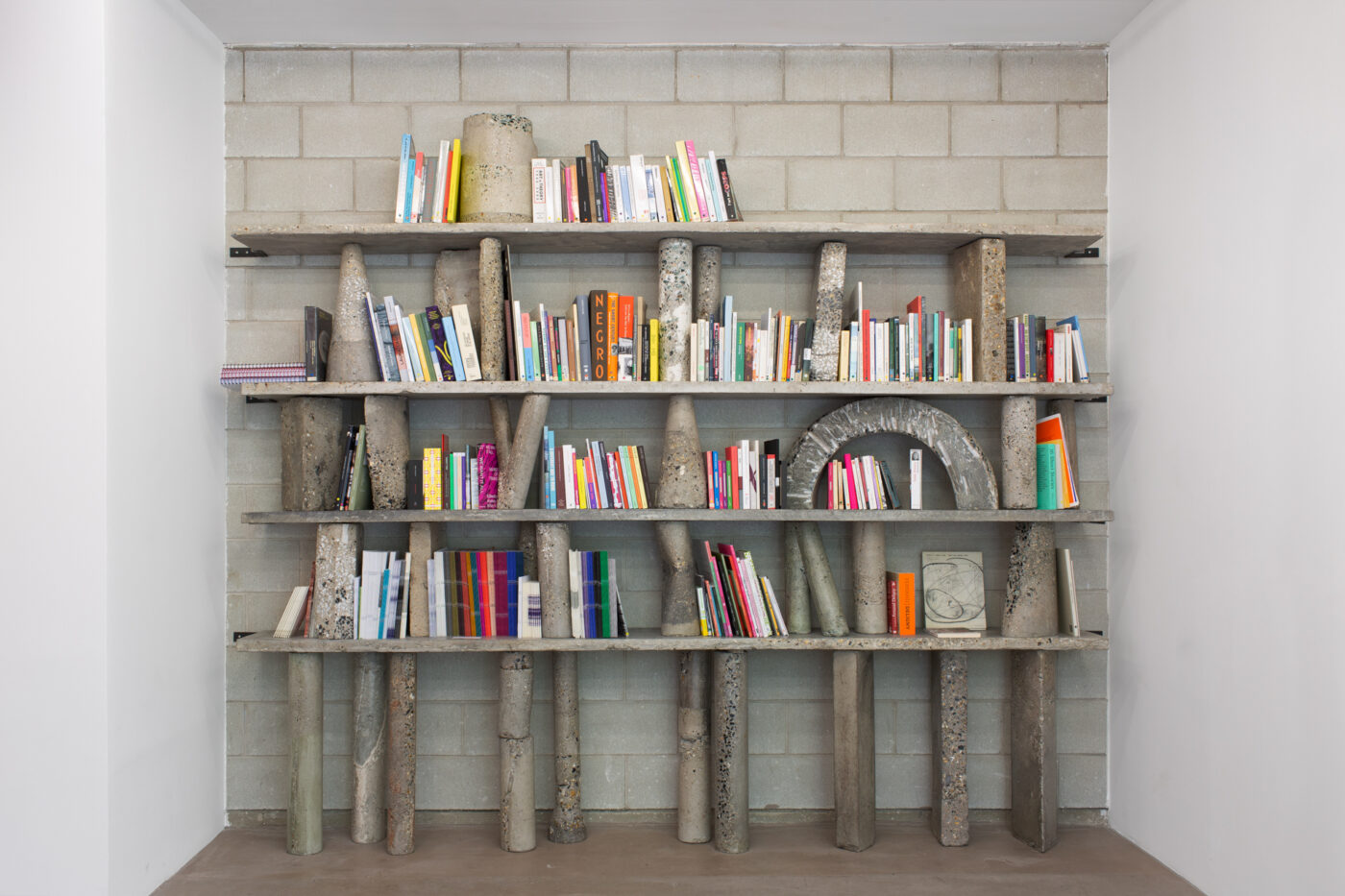
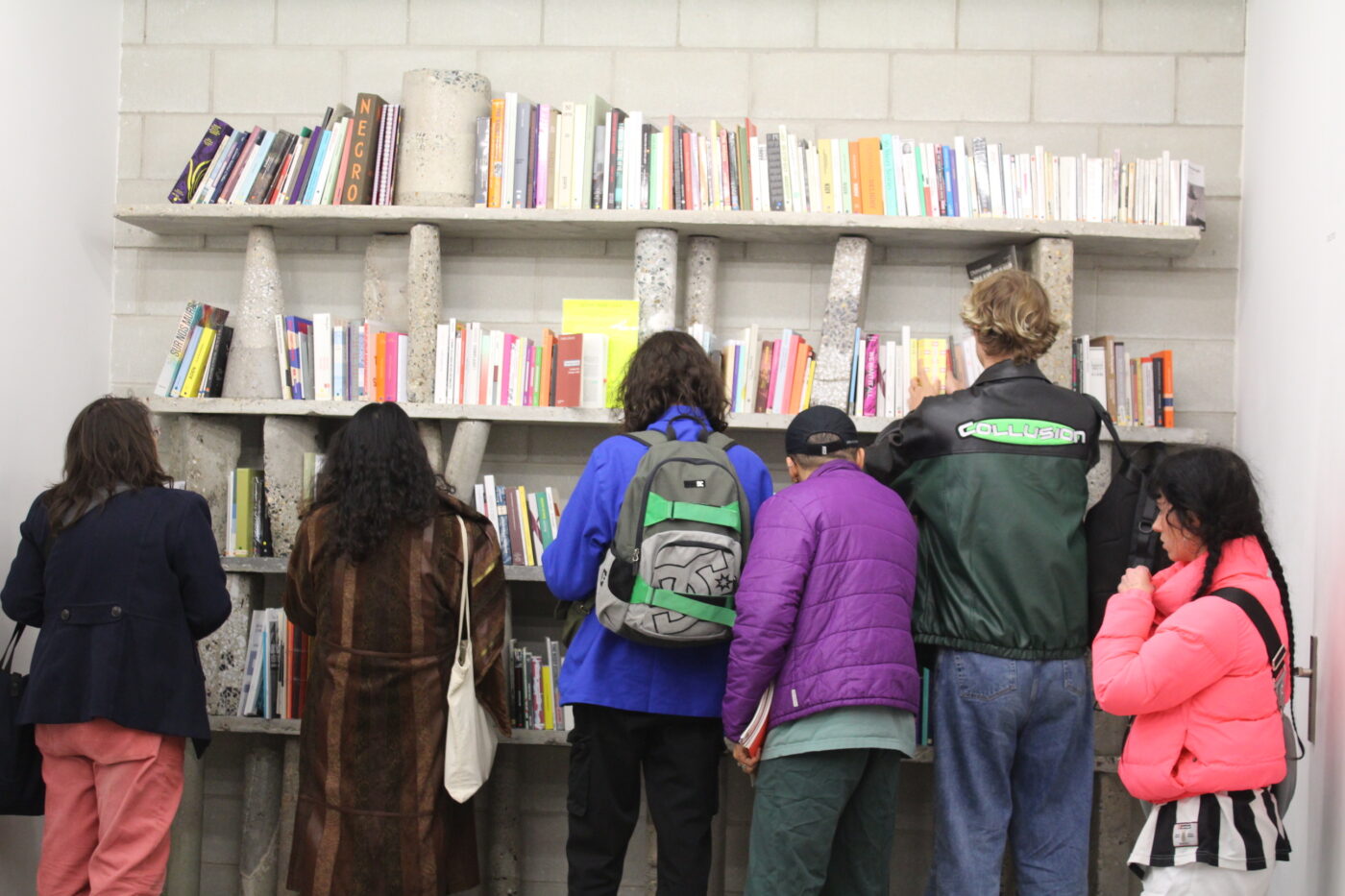
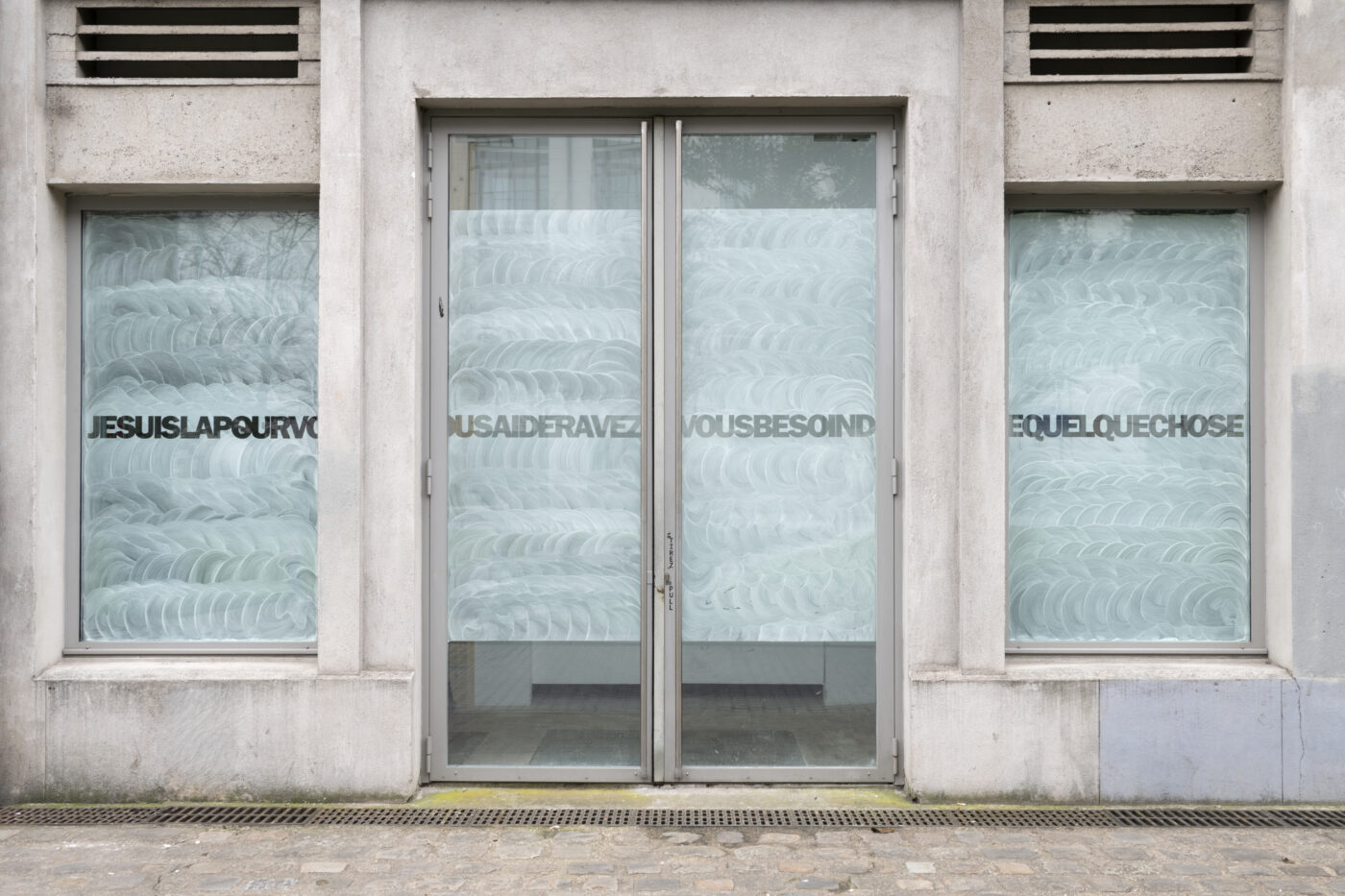
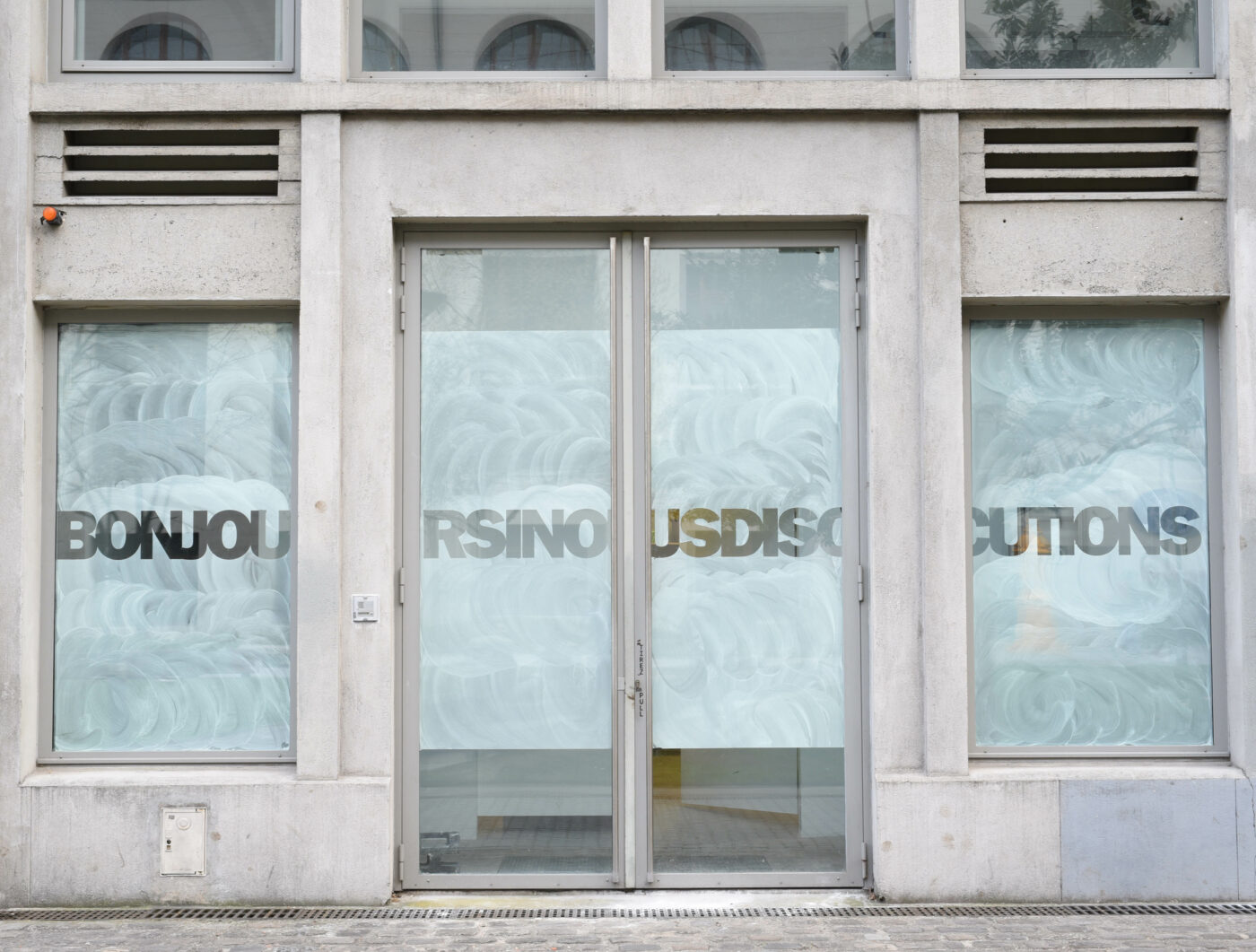
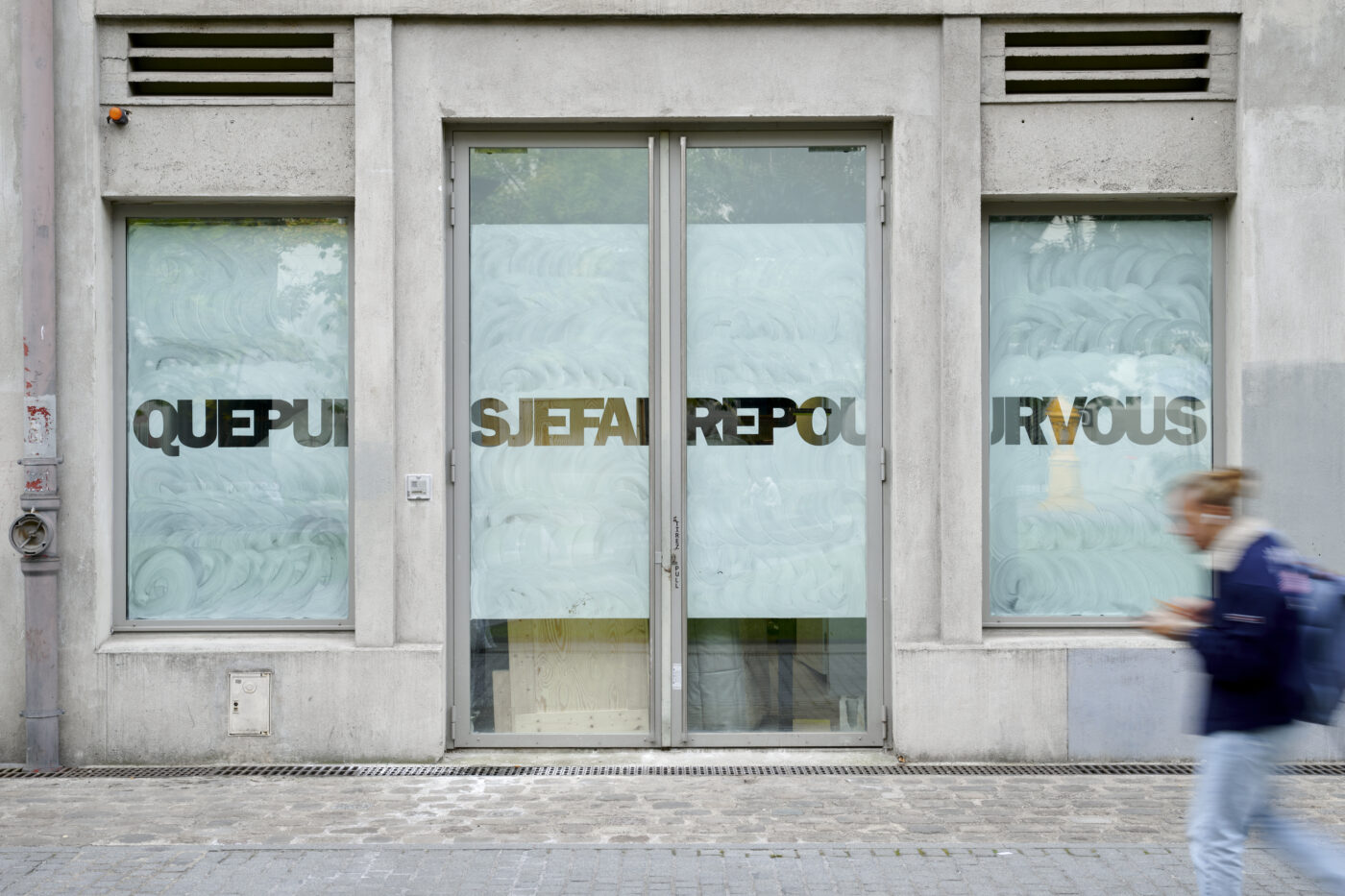
la facultad – Social organization residency Catalina Insignares and Myriam Lefkowitz
April — June 2021
From April to June 2021, Bétonsalon hosted la facultad, in residency for a first phase of research and meetings. The links created with the CHUM, Centre d’Hébergement d’Urgence pour familles migrantes de Paris-Ivry – (Emergency Housing Centre for migrant families in Paris-Ivry) – EMMAÜS Solidarité materialized with the opening up of a space in a yurt at the centre, dedicated to la facultad. From October to January, la facultad regularly presents its practice there: three days a week, Catalina Insignares, Myriam Lefkowitz and Julie Laporte offer meetings around a somatic-choreographic practice for people accommodated within the association and those assisting them: actors from the social, legal and care fields, volunteers, and cultural partners.
ADAGP / Bétonsalon Research and Production Grant 2021 Anne Le Troter
18 June 2021 — 23 April 2022
The artistic committee of the ADAGP x Bétonsalon grant met on 18 June 2021 and named the 2021 laureate: Anne Le Troter. She is the fourth artist to benefit from this grant, after Franck Leibovici (2017), Liv Schulman (2018) and Euridice Zaituna Kala (2019).
ADAGP & Bétonsalon, sharing common vocations – working closely with artists, highlighting visual heritages and art history – co-created a research program that aims at developing the work of an artist on the circulation and reproduction of images, in relation to the research on the Marc Vaux Archive led with Centre Pompidou MNAM-CCI.
This grant, amounting to 20 000 euros, aims to accompany an artist in the development of a research, during 3 months, on problematics related to representation, production and dissemination of images, based on the Marc Vaux Archive and on academic research conducted on this archive. This research can be part of the field of art (rereading of art history, exploring unknown and marginalized life journeys, reflecting on the actual production of images…) but also in the wider field of the production of images in a world saturated with information (political, eco¬nomic, scientific, journalistic…).
The 20,000 euros of this grant are intended for covering the artist’s fees (5 000€), their production budget (10 000€), the costs of supporting their project (5 000€) and (if necessary) their accommo¬dation costs in Paris.
Initiated in 2017, this program is conceived as an artistic research platform dedicated to the experimentation of non-linear models of knowledge production and distribution between researchers, contemporary artists, associations, cultural institutions and the general public.
The artistic project
A project for a medico-social radio station hosted by the authors of anonymous works referenced in the Marc Vaux photography collection.
“As I usually work a great deal with sound archives that I produce or discover, I naturally went looking for them in the Marc Vaux photography collection. I found them in the interstices of the photographic images, in other words, in the unrecorded narratives that exist between these images by anonymous authors. Just like Marc Vaux, who established a mutual aid residence for artists and intellectuals, these anonymous authors, whom I would call “Volunteers” will seek to set up a medico-social radio station to give voice to the images that constitute this photographic collection. In a desire to give them an identity, they speak mainly of their biological bodies, the bodies of art workers and the condition they are in.
Hence, with the assistance of the medical corps, what this radio station plans to broadcast is a rereading of art history from 1920 to 2021, viewed through the prism of medicine. The history of medico-social radio is located in the Montparnasse neighbourhood. The tower had a radio wave relay station in the 1980s and broadcast local radio station programmes, particularly 95.2 FM that included: Médico Social, France Lecture, Sport et Musique and the Paris FM2 radio station. I want to revive Montparnasse’s radio history by inviting actors from Radio Citron, for example (inspired by La Colifata station), to play the roles of the authors of the anonymous works that are part of the Marc Vaux photography collection.
Once this medico-social radio station has been set up, the sound archives created will be broadcast in the form of performed radio plays that will be audible through acoustic garments. These acoustic garments will be orchestrated by performers who will reveal the words spoken by others, like so many portable radios ready to broadcast the voices of anonymous authors in the city. Those who spread the words of others will work as antennas or serve as relays.
Starting from the observation that sound, voice and speech are intrinsically mobile, and it is amplification that made sound partially sedentary, I would like to offer a mobile acoustic installation, outdoors, that works thanks to people who carry the sound with them, people who carry voices with them and who would be willing to host other people’s words on their own bodies. The words would be seen as organs, seeking to bring a society “to life” in our present world, reviving it by carrying these voices around.”
Artistic committee 2021
Each year the grant is awarded by an artistic committee formed of with professionals from the art world. This year, the committee brings together:
Jagna Ciuchta, Artist
Mica Gherghescu, Head of Department for Research Services at Bibliothèque Kandinsky, Paris
Béatrice Gross, Independant curator and critic
Émilie Renard, Director of Bétonsalon – Centre for Art and Research
Manuel Segade, Director of Centro de Arte Dos de Mayo (CA2M), Madrid
Euridice Zaituna Kala, Artist (2019 grant winner)
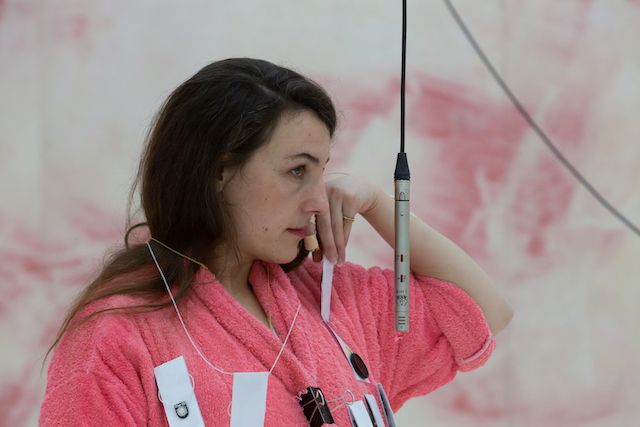
Famille Rester. Étranger – Residency
20 — 25 August 2021
The co-authors of Rester. Étranger, Nicole Koffi, Barbara Manzetti, Sabrina Pennacchietti and Caroline Sebilleau, are in residence at Bétonsalon with Juliette Pollet, curator at the CNAP, and Daisy Lambert, her assistant, from 20 to 25 August 2021.
Under the title Personnellement je préfère merveilleux, otherwise known in Koulango boundoukou as Mien mi koro zingré tchiré, the authors give up the way of life of the processual and durable work Rester. Étranger, by means of a device that activates family memory.
This residency is one stage in their proposal for “La vie bonne”, supported by AWARE – Archives of Women Artists, Research and Exhibitions – and Cnap – Centre national des arts plastiques, a programme for women artists who write performance works. “La vie bonne” echoes the question posed by Judith Butler: “How can we lead a good life in a bad life?”
Both work and author, the Rester. Étranger has been performing its entry into France and the French language for several years now. On this geographical, administrative, legal, literary and poetic threshold, a choral writing style emerges that they call fle, from the acronym FLE, Français Langue Étrangère (French as a Foreign Language). The language, augmented by expressions from the authors’ mother tongues, is performed, printed and handwritten on durable and perishable media such as floors, walls, windows, posters, post-it notes, cards and rolls of paper, or is given hospitality in the form of a book, a film or a radio production.
Bi hè yebor goussèguè lè tou tchilibor, We are the women of the Rester Family. Étranger, it’s June 2020, we’re writing an eight-handed letter in response to the call for projects entitled “La vie bonne”, launched by AWARE (Archives of Women Artists, Research and Exhibitions) and Cnap (Centre national des arts plastiques). The women artists were invited to respond to Judith Butler’s question “How can you live a good life in a bad life? in 2020, when she was awarded the Theodor Adorno Prize, taking up and transforming the German thinker’s question. How can we have a good life “in a world in which the good life is structurally or systematically forbidden to the majority? For Judith Butler, the second problem is to determine “the form that this question can take for us today. In other words, how does the historical moment in which we live condition and influence the form of the question itself?”
What good is an artist alone in her work?” replies the Famille Rester. Étranger. I’m the kind of person who wakes up in the work, whispers in the work, lives in the work, with others who have found their place in it. People who don’t have the same rights as me. The same right to live as I do. People who don’t receive the same consideration from others as I do.”
This residency is an opportunity to immerse oneself in the work Rester. Étranger, with the aim of guaranteeing the ethical conditions for the transfer of the work to the Centre National des Arts Plastiques. They will be accompanied by other authors from the family, including Prince Pacôme Nangoh, translator and interpreter into the Agni language (Côte d’Ivoire), Youssouf Hassan, a specialist in survival architecture, Hassan Abdallah and Bartolomeo Terrade, sound artists; Olivier Marbœuf, invited as producer, will work with the family on a film version of the work.
The aim is also to compare the accessibility of the intergenerational work with the different abilities of the audience.
The authors quoted above certify that they are not alone in the work Rester. Étranger, created with Abdelaziz Abdelkarim, Omar Haroune Aboubakar, Mohamed Bamba, Hussein Ishak Abdallah, Pascaline Denimal, Mohamed Hussein, Hélène Iratchet, Motawakil El Douma, Abdellah Ismail, Audrey Gaisan Doncel, EricYvelin, Bouchra Koné, Kassin Koné, Tanguy Nédélec, Masri Omar, Héloïse Pierre- Emmanuel, Chloé Schmidt, Corinne Lamesch, Maia Bosch, Ariane Leblanc, Benoit Briant and the Exposer/Publier family, Barbara Coffy-Yarsel, Barış Yarsel, the children Eva, Mahé, Sorina, Gaston, Iris, Lila, teenagers Gheorghe, Hélio and Lester, Massimiliano Manzetti, Fantôme Francis Terrade, Olivier Nourisson, Hugo Hecker, Simon Marini, Victor Donati and the R22 Tout-Monde family, Marian del Valle, Kamal Hassan, Ismail Afghan, Charlotte Imbault, Gérard Mayen, Aurore Desprès, Mathys Berchery, Kieran Jessel, Esther Poryles, Geneviève Coudre, Virginie Colemyn, Viviana Moin, Claire Harsany, Denis Mariotte, Caroline Cournède, Sandrine Moreau, Mathilde Villeneuve, Alexandra Baudelot, Renaud Golo, the Les Laboratoires d’Aubervilliers family, Natasa Petresin Bachelez, Marie-Laure Lapeyre, Pauline Bastard, Pauline Hurel, Pierre Simon, Christine Pécheux, Églantine Laval, Élodie Tincq, Line Francillon, Chiara Figone, the Serretta family, the Agostoni family, the Morin family, Julie Nioche and the A.I.M.E. family, Elena Sorokina, Isabelle Ginot, Katarina Lanier, Gwenn Carion, Katerina Kracmanova, Karine Boudier, Garance Brehaudat, the Anacrouse family, Alnour A.Y., Hassan Ali, the “Adam” family and all the members and supporters of the Occupation de l’université Paris 8 Saint-Denis Vincennes 2018, the PourLoger family, the Paris 8 University Library family, Isabelle Launay, Makis Solomos, Julie Perrin, Roberto Barbanti, Laurent Pichaud, Raphaëlle Doyon, Nathalie Coutelet, Barbara Formis, Sabine Macher, Chiara Palermo, Camille Paillet, Toshiba Nisan, Françoise Rognerud, Tecla Raynaud, Kristina Solomoukha, Paolo Codeluppi and the Maison de l’Ours family, The Living And The Dead Ensemble, Collectif La Seine, the Bureau des Dépositions family, the Villa Mais d’Ici family, Biss, the family of Claudia and Gheorghe Le Jeune, the family of Aurel le Maigre, the family of Aurel le Nervuso, the family of Emil, Rodica and the adopted Gheorghe Le Vieux, Mich-Mich, Virginie Bobin and the Qalqalah قلقلة family, the CNAP / AWARE family.
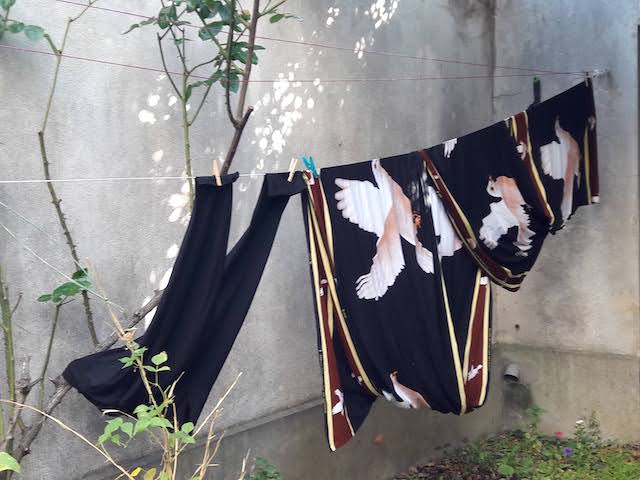
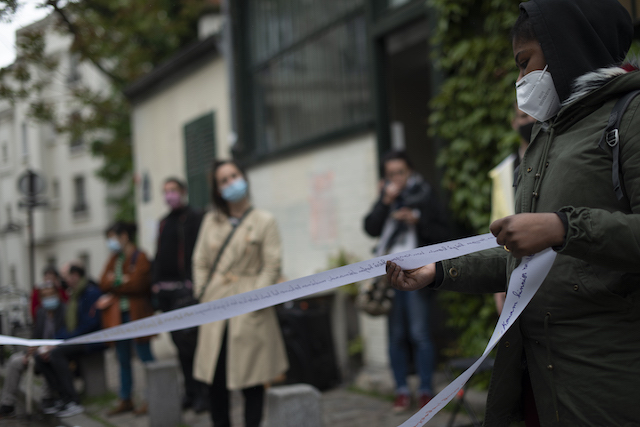
Pareidolia: reading the invisible – School residency Simon Ripoll-Hurier
September 2021 — June 2022
The residency “Paréidolies : lire l’invisible/Pareidolia: reading the invisible” engages students at the Thomas Mann residential middle school (Paris, 13th) in a reflection on the imperceptible, areas that are imperceptible and inaccessible.
Throughout the 2021 – 2022 school year, the artist Simon Ripoll-Hurier carried out an investigation with students at the Thomas Mann residential middle school, into invisible areas of their environment. During workshops they attempted to capture these spaces using sound and image recording techniques. With Simon Ripoll-Hurier, the students created a futuristic film. But this futuristic approach is nonetheless a vision of the present moment, a vision of phenomena invisible to the naked eye, which can reveal things that are imperceptible but already exist. Thanks to these workshops the students observed their surroundings, their bedrooms, their classrooms, their school, their neighbourhood, and they used their imagination and their creativity to produce a group work that is both a documentary and a fiction film.
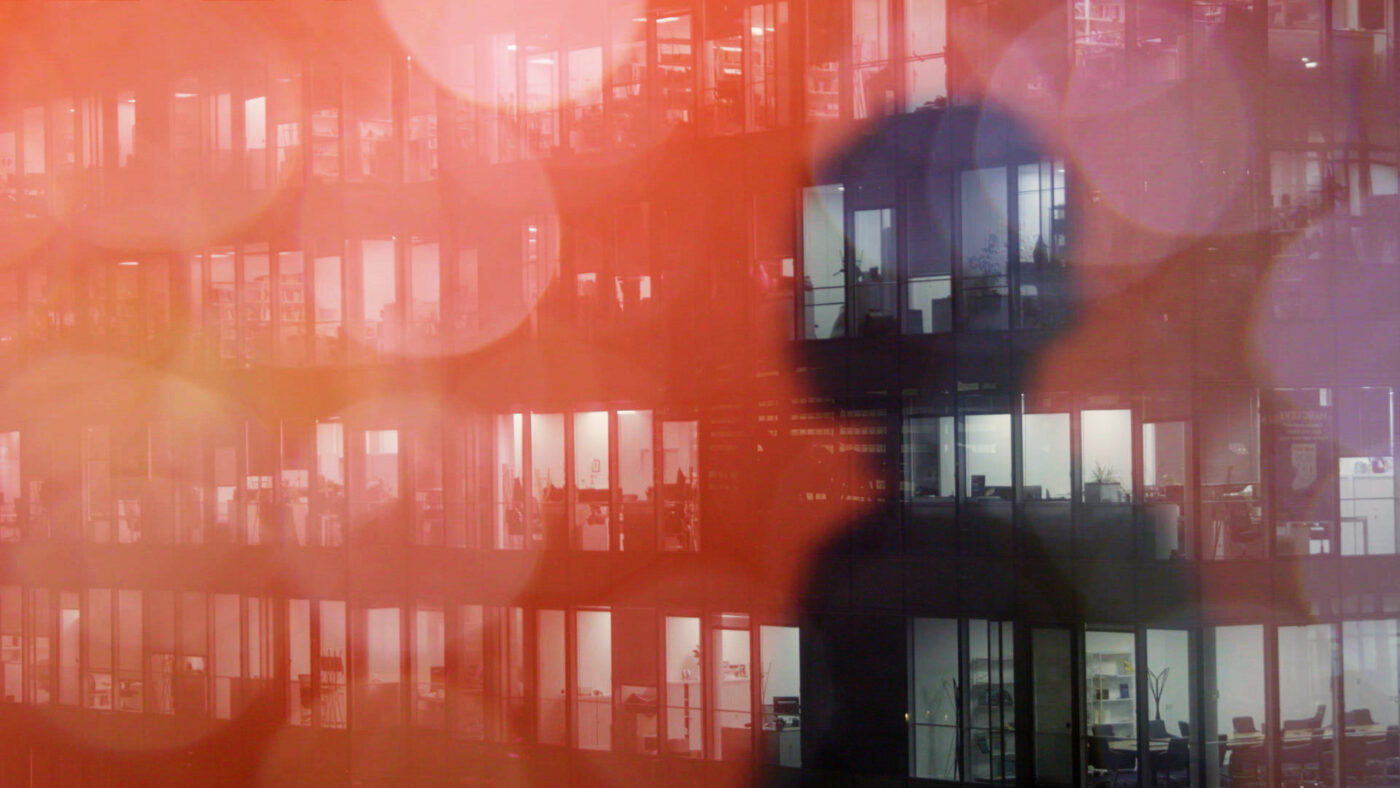
Contact language and superstrata – Social organization residency Anne Le Troter
September 2021 — June 2022
With the school residency project “Langue de contact et superstrat/Contact language and superstrata” conducted by Anne Le Troter, the specialist academic centre (CASNAV) at the Ivry-sur-Seine CHUM (Emergency Housing Centre for Migrant Families Emmaüs Solidarité) and Bétonsalon – centre for art and research supported an artistic and cultural partnership that made it possible to build bridges between students, artists, families, teachers and students residing in Ivry-sur-Seine and the 13th arrondissement.
Experimenting with the hybridization of language and the development of a shared vocabulary, Anne Le Troter and the students created sound poetry focusing on the geography of speech on the body, a new oracy, a discourse that ignored the head, leaving room for other possibilities and other approaches to language.
This project is supported by the Drac Île-de-France.
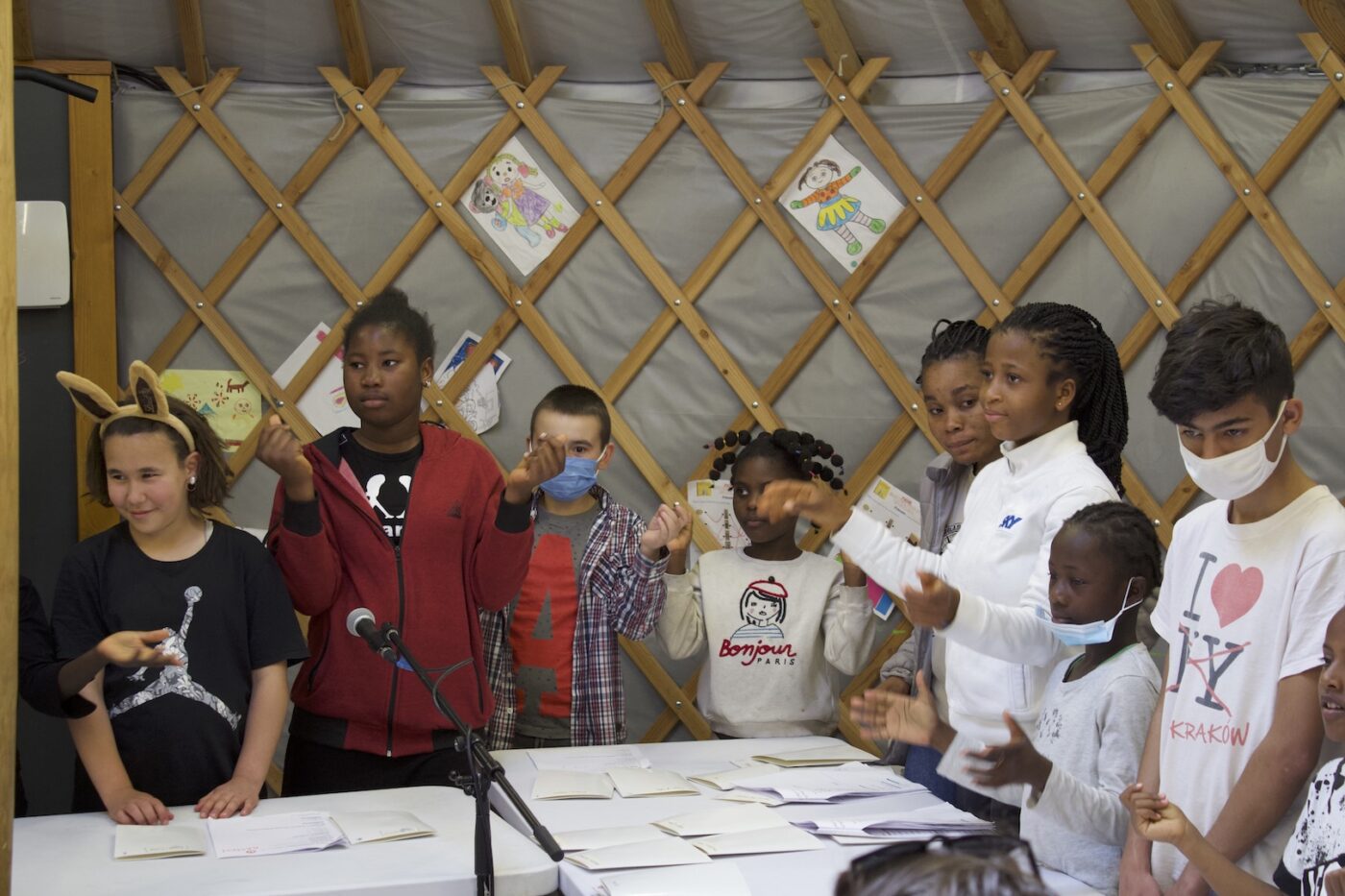
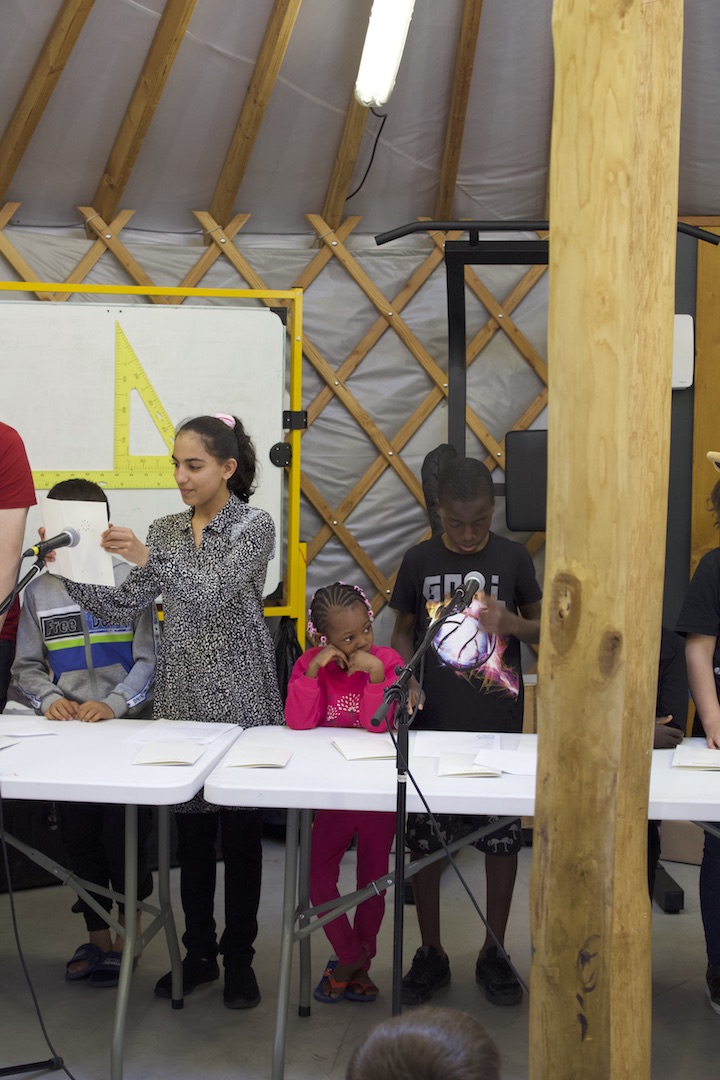
Zizanies, a polyphonic vigil: 2021 Nuit Blanche Clémence Allezard, Phoenix Atala, Sheila Atala, Catherine Doste, Maïder Fortuné, Stéphanie Garzanti, Victoire Le Bars, Clotilde Le Bas, Anne Le Troter, No Anger, Gaëlle Obiegly, Cécile Paris, Prichia, Rosanna Puyol, Eden Tinto Collins, Lise Wajeman
Saturday 2 October 2021
In the pitch, the inflections, the silences and hesitations of the women’s voices she hears in songs and films, on the radio, in artists’ works, novels and the essays she reads, Clara Schulmann hears ways of catching her own breath to finally speak out.
Using a series of women’s words she had assembled in a fragmentary manner in her book Zizanies, this time Clara Schulmann imagines a festive and polyphonic Vigil for the 2021 edition of the Nuit Blanche.
Bringing together individuals from a range of fields, artists, writers, singers, researchers, yoga practitioners, beatboxers, etc., people for whom voice is a key feature of their practice, this event will host a range of oral forms—songs, readings, speeches, conferences, stand up artists, etc.—in a festive atmosphere. During the evening, the guests will contribute to this ephemeral community of voices, intervening one after the other to create a long collective performance. Listening to the circumvolutions of speech, its inflections, hesitations, repetitions, silences, babblings, giving in to the mingling of shared accounts and feeling the power of orality, are so many experiences that everyone can assess themselves against before this stage for solo voices.
Programming
8pm: Victoire Le Bars
8:15pm: Anne Le Troter – Le climat de l’écriture
8:30pm: Rosanna Puyol – D’l’or
8:45pm: No Anger – Dans la gueule d’un souvenir
9pm: Gaëlle Obiégly – Éclats
9:15pm: Catherine Doste – Initiation au yoga facial
9:30pm: Sheila Atala – Being In – La polyphonie comme concept de collaboration
9:45pm: Lise Wajeman – Parler flou
10pm: Eden Tinto Collins – Poilue
10:15pm: Clotilde Le Bas – Une aiguille devenue arme
10:30pm: Prichia
10:45pm: Clara Schulmann – Et gare, à la revanche
11pm: Stéphanie Garzanti – Pas de voix sans oreilles
11:15pm: Cécile Paris – L’arrivée des voix variées, écoute et grattage
11:30pm : Clémence Allezard – Comme des brèches
11:45pm: Maïder Fortuné – Script pour Lee Lozano
00pm: Phoenix Atala – Algorithme الخوارزمی
The Vigil will resonate with the collaborative dimension of the exhibition The Fold of the Cosmic Belly by the artist Jagna Ciuchta that welcomes works by amateur, emerging or confirmed artists, bound by real, aesthetic, intellectual or imaginary links of friendship, kinship and transmission.
Continuously from 7pm to 2am:
Exhibition The Fold of the Cosmic Belly by Jagna Ciuchta, with Aïcha and Sheila Atala, Miriam Cahn, Patty Chang, Arnaud Cousin, Chloé Dugit-Gros, Allal El Karmoudi, Fadma El Karmoudi, Karima El Karmoudi, Nan Goldin, Nancy Holt, Marta Huba, Suzanne Husky, Graciela Iturbide, Janka Patocka, Samir Ramdani, Martha Salimbeni, Alina Szapocznikow, Dorothea Tanning, Eden Tinto Collins, T. Venkanna
More about the exhibition
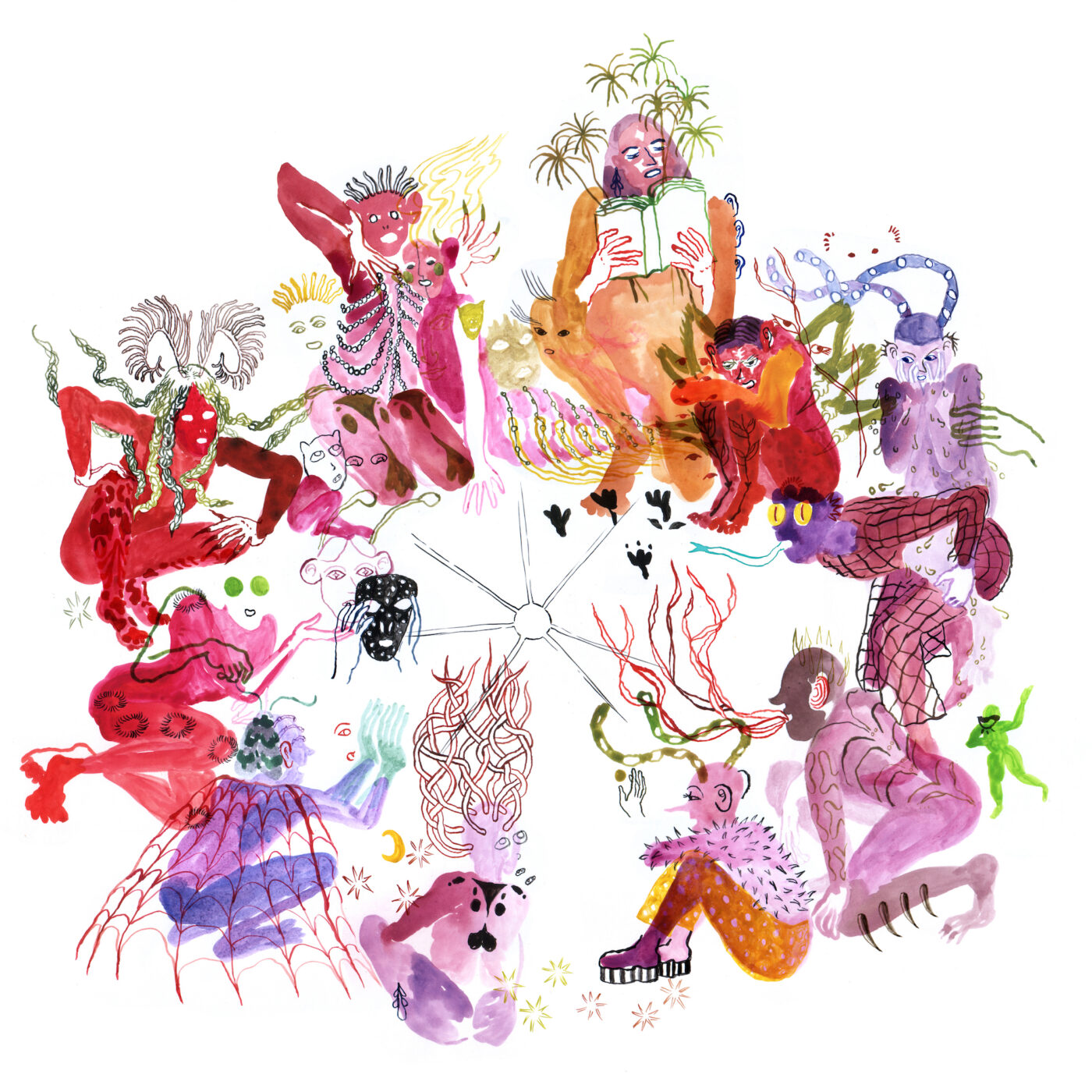
Festival Courtisane
9 — 11 December 2021
Bétonsalon – art and research centre
invites Courtisane – festival and platform for the diffusion of film and audiovisual art
Since 2002, Courtisane has been organising a festival in Ghent, Belgium: its programme unfolds in a kaleidoscope of styles, media, gestures, languages and emotions, creating a patchwork of historic and recent works that share a thirst for experimentation, a signature and a sense of resistance. This invitation takes the form of a three-day programme featuring short films by Kevin Jerome Everson, works by Lis Rhodes, and films by Annik Leroy, Beatrice Gibson and Nina Menkes.
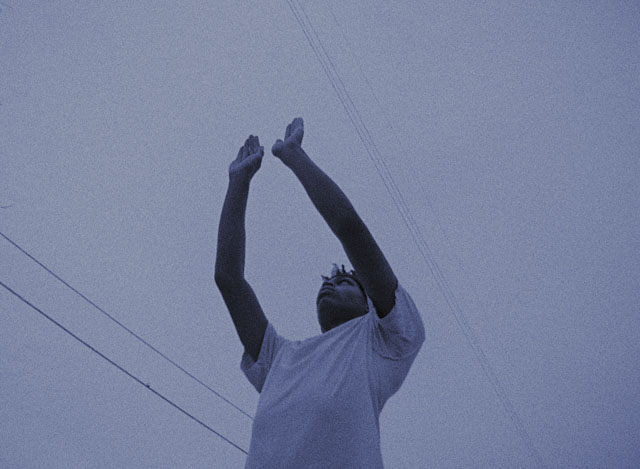
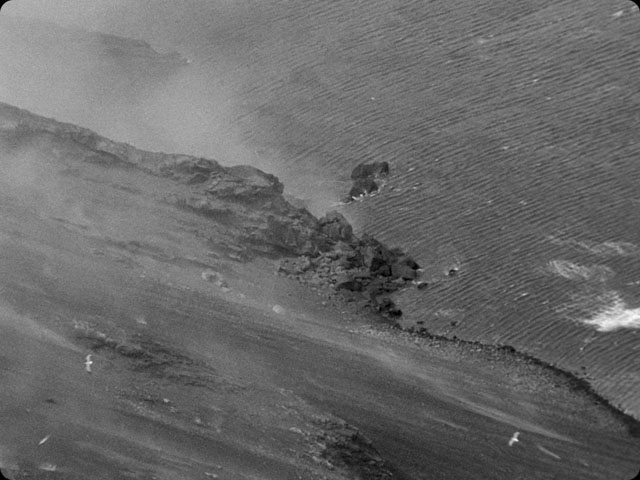
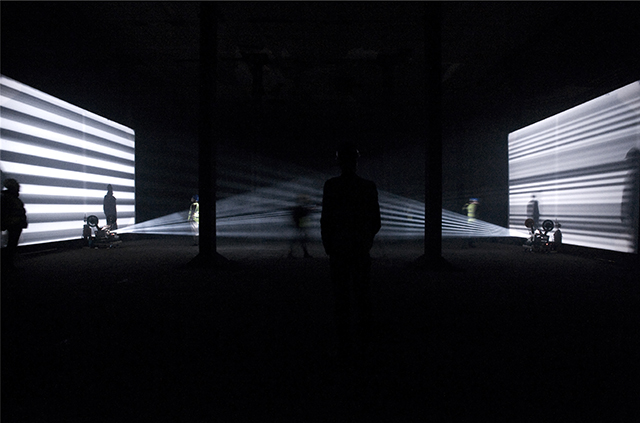
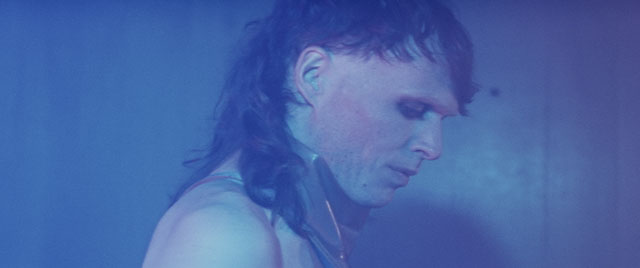
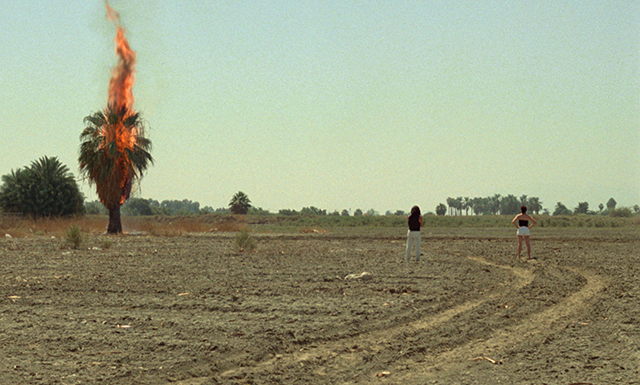
Current
Upcoming